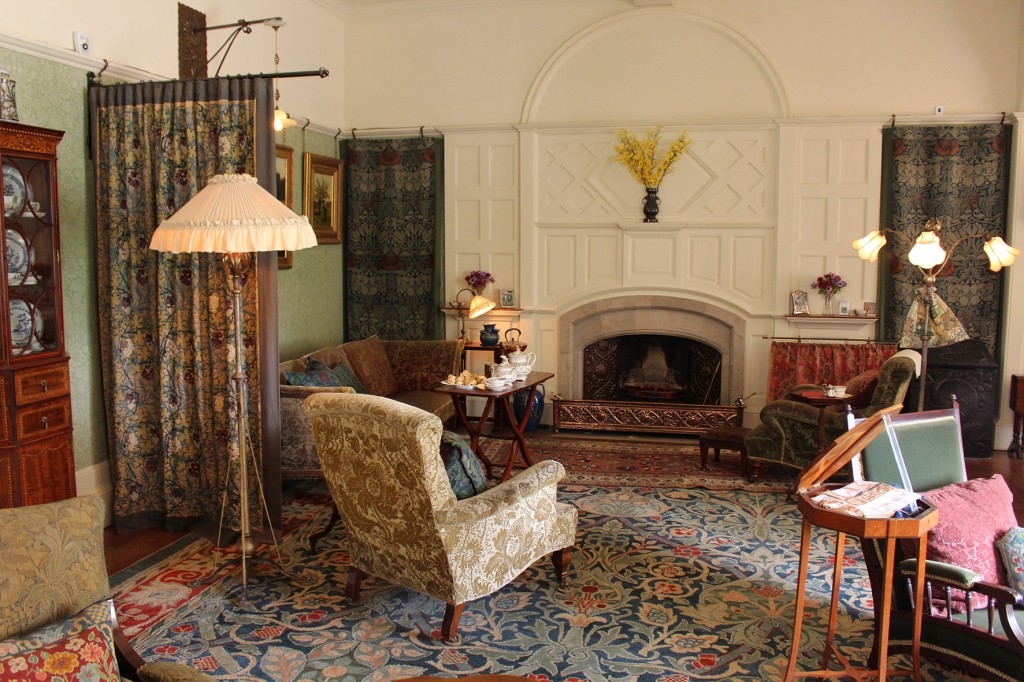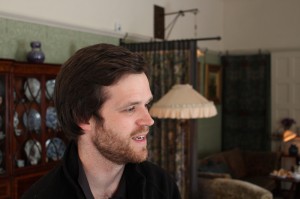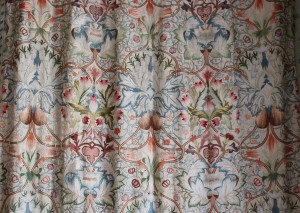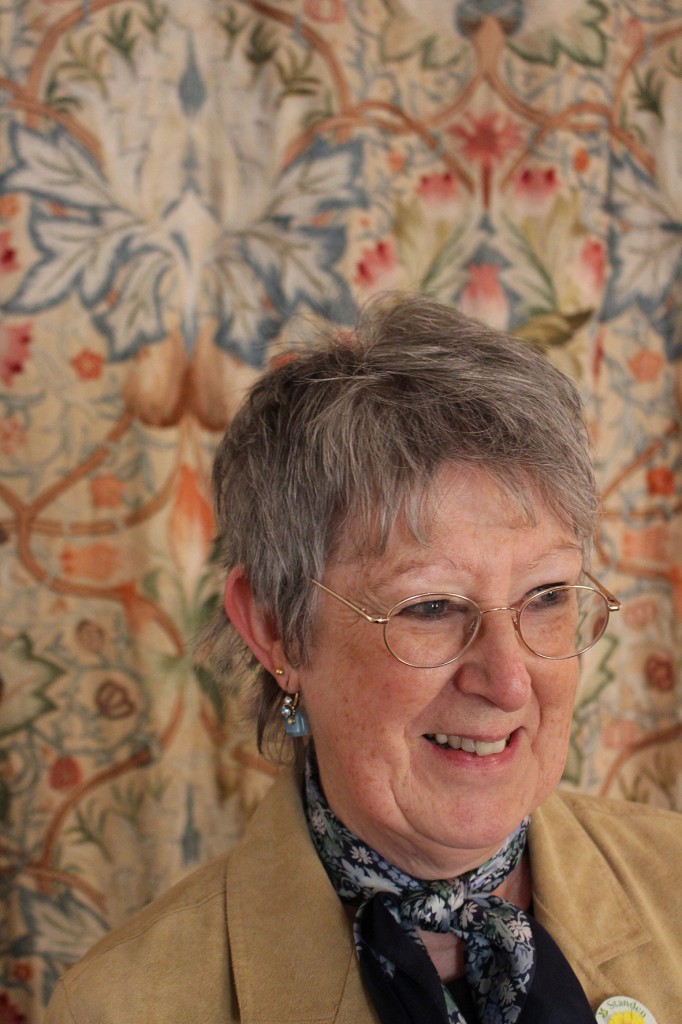
It is a beautiful bright spring day as I approach the National Trust property, Standen, near East Grinstead in West Sussex. The dappled light falls upon the narrow drive through the canopy of trees, the vista opens as you arrive at the house. I have come to see Standen’s latest exhibition, ‘Medieval to Morris’ which explores the history of embroidery.
Standen is a fine example of a late 19th century Arts and Crafts Movement home. It combines the talents of architect, Philip Webb with an interior alive with the rich textiles and wallpapers of the designer, craftsman and poet, William Morris. Webb and Morris were famously close friends.
Standen was built between 1892 and 1894 for James and Margaret Beale. James was a successful and wealthy London solicitor. They chose the architect Philip Webb to design and oversee the project.

The house manager, Ben Dale, comes to meet me. Ben is a social historian whose passion for Standen is infectious. As we tour the house together he tells the story of this remarkable place through the objects, house and gardens. I comment on the unity of design which meets your eye in every room. Ben responds “Everything was designed by Webb for a reason. It’s a shining example of the Arts and Crafts. He put great thought into how the rooms would be used with a real attention to detail.”

As you arrive in the Drawing Room you can imagine it as a family setting with the Beale’s using it. The easy chairs are mostly by Morris & Co. The settee was probably designed by Agnes and Rhoda Garrett. The Garrets set up their own ‘Art Decoration’ business in 1875, working in the Morris taste. They lived together at Firs Cottage in Rustington. I am interested how important the textiles and carpet are to the overall aesthetic of the room. Ben explains “Many of the wall-hangings were made by Margaret Beale. She didn’t like to have idle hands which is why she embroidered with her daughters. It was a very social thing which they did together.” The hanging beside the settee was worked by Margaret Beale. This ‘Vine’ pattern was first designed by Morris for wallpaper in 1873. Margaret started work on the panel in 1920 and it took six years to complete.
The carpet, designed by J. H. Dearle is particularly fine. These hand knotted wool carpets were manufactured at Morris & Co’s Merton Abbey workshops.

Ben introduces me to Sally Roberson who is a volunteer at Standen and curator of their current exhibition, ‘Medieval to Morris’, which explores the history of embroidery. Sally expertly leads me around this excellent exhibition which tells the story of embroidery from medieval times to the current day. Examples of the stitches and techniques used over the centuries reveal the art of the embroiderer. It provides context and insight to the remarkable collection of William Morris designed embroidery at Standen. I comment on how I am fascinated that so many of the embroidered hangings and panels were worked by Margaret Beale and her family. Sally responds “Almost all of the panels were produced from kits. The patterns were printed on linen.”
I have always been struck by William Morris’ genius for flat patterns and his remarkable understanding of the relationships between natural forms, the curl of a leaf, a flower and its stem. I am drawn to an ‘Artichoke’ pattern panel embroidered by Margaret Beale and her three eldest daughters, from a design by William Morris, between 1894 and 1896. Sally says “It is stitched in silks which give a richness and sheen which wool would not.” Flowers and patterns were obviously as important to Margaret as they were to Morris. Sally remarks “Mrs Beale was a woman obsessed with gardening and embroidery, one informed the other.”
It has been wonderful to visit Standen anew and to see it through the eyes of Ben Dale and Sally Roberson. The exhibition ‘Medieval to Morris’ runs until the 26th July 2015. For more information on Standen House and Gardens, West Hoathly Road, East Grinstead, West Sussex, RH19 4NE visit their website by clicking here or telephone 01342 323029.
Revd. Rupert Toovey. Originally published on 27th May 2015 in the West Sussex Gazette